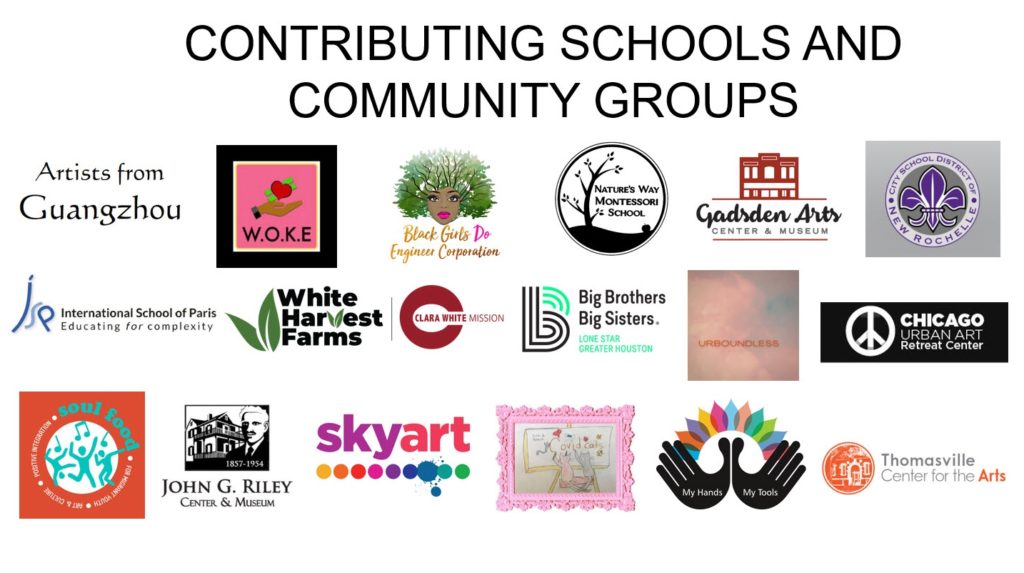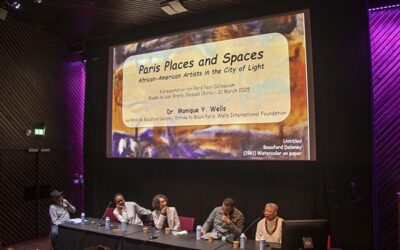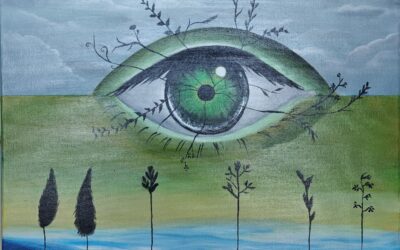By Vera Grant
In the past year, Covid19 ripped through our communities, bringing death, sorrow, and isolation. During this seemingly endless moment, deeply entrenched public traumas stood revealed: rampant social inequities, flagrant police abuse and murder, political corruption and radicalization, and public economic failures and ineptitudes. The murder of George Floyd hoisted all these variables on their heads to expose the red thread of racism as a guiding narrative woven all through our collective underbelly, and global protests thrust people onto formerly vacant streets.
As the most vulnerable sought out new ways to have and hold each other, the overwhelming consequences to once stable, even if inadequate, social support systems unraveled. Schools and daycare centers closed, and parents working from home were suddenly simultaneous child-care providers and teachers. Those who could go online endured differently from those abandoned to this social paralysis without Wi-Fi or cable connections.
It’s been a terrifying year of pandemic uncertainty from which the world only slowly begins its emergence. Yet, valiant responses to the burgeoning and intertwined crises emerged that revealed a radiant social ability to persist, survive and even thrive amid the turmoil.
Often the voices of the community alliances and informal social networks that bend to do the work of civic and personal first aid, before, during, and after the stream of uneven and faltering government resources, remain obscured. Here, in this remarkable project entitled COVID-19 PAGES: The Influence & Inspiration of Women, these experiences come to us through amazing artwork. A call went out to gather and capture the visual culture with a two-fold intent: document the experiences and demonstrate the healing ability of art. Through this online exhibition drawn from the submissions, we have received abundant gifts.
The call for art, described as the “community outreach phase” (Phase II) of COVID-19 PAGES was based on two objectives: 1) To provide a platform on which nonprofessional female artists (women and girls) could display COVID-19-themed works as part of the recording of this unparalleled period in the history of the world, and 2) To provide these artists with the opportunity to relieve their stress and anxiety, and even process grief, through the act of artistic creation. Multiple organizations responded from China, France, and the United States. The international component of the project manages to reveal this global experience of the COVID pandemic, while retaining the local dynamics the artists experienced and shared.
The resultant collection of almost sixty artworks, photographs, sketches, prose, poems, and texts present a remarkable range of commentary on the experiences of COVID19. The call went out to schools and organizations working with communities and youth during the crisis to share the artworks produced by their constituents. It goes on view at this moment of reopening across the globe, which brings some joy conjoined with continued uncertainties and continued disparities. A singular visitor response to the continuum of expressions and representations shown here may simply be one of gratitude.
The sponsoring group – the collaborative team of the Wells International Foundation (WIF), the Anderson Brickler Gallery (ABG), and Thinking CAP: Collaborative Art Projects (CAP) (collectively known as WIF/ ABG/CAP) – envisioned the exhibition to be a wondrous gift for the audience as they engage with this online installation. It works! You feel the impassioned current running through the gathered artworks; you may be energized by it, and you may use it as a personal resource for healing.
The output from artists usually combines some of the interconnected concerns and sorrows revealed by the virus: grief and death; politics and justice; homeschooling and zoom dramas. Their artworks provide a visual mapping of our surroundings and/or the physical and palpable contexts in our shared worlds. Essential workers seem a powerful draw, but there’s also an expanded concern with workers in health care and medicine and their devices, tools, and general accoutrements. Building out a broader framework for the installation, we may trace how the sense-making imagery reflects our worldwide common trauma and multi-faceted yet instantly legible efforts at meaning making.
Placing these works within the larger production of artworks, exhibitions, and reflection of this past year, you feel the networks of isolation and pain – fiery depictions of the virus model as an obstacle, obstruction, and enemy to friends, family, and former social contacts. The vibrant strand of heroes runs through the pieces: medical workers, parents, community servers and a remarkable celebratory attitude emerges from the groups – “we have survived!”
Mothers are a repeated motif. Facing a number of pandemic-related difficulties, from having to adjust their work schedules while having children at home full time, to having to add “primary school teacher” to their numerous hats as a parent, the art of these children serves as witnesses to their efforts. In their stories of “what we are going through,” you see the hope and encouragement given to each other. The entire show reinforces the bold idea that we can be there for each other, no matter what the circumstances.
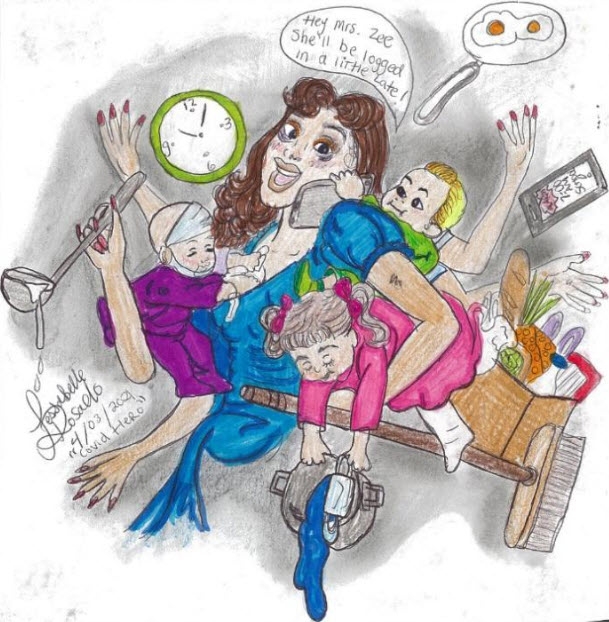 Jessabella Rosado – Boundless
Jessabella Rosado – Boundless
COVID Hero
Drawing
2021
Children are keen observers, skilled innovators, creative producers, full-time learners, and important contributors to their households and communities. Featuring their art-making takes them seriously as contributors of content and provides a richer, more insightful archive for future generations looking back on an unprecedented year. The exhibition also deepens the form of quickening online exhibitions this year bent on promoting diversity and inclusion within museum institutions and society at large, while simultaneously fostering critiques of the traditional purveyors of art. The time for children to join the ranks of museum communities as valued contributors to content and programming is past due.
A remarkable play between image and text reverberates throughout the exhibition. We behold plentiful representations of the protective facial masks found everywhere. But we also see poignant depictions of isolation and quieting of the world. The opening textualized or artwork/poem piece speaks powerfully of the loss of touch, while others works invoke the abrupt and crushing silenced world. Interspersed with the material effects of domestic daily life in the drawings, you see the reach of raging political forces – both the hopeful and the toxic: here we have a portrait of the new American vice-president Harris, and there a written caution to not diminish my rights.
The groupings of the installation alert you to the initial call for art, as the selections function as commissioned artworks. The contacted groups that responded gathered their artworks and made their joyous selections.
Big Brothers Big Sisters Lone Star Greater Houston submitted three stunning works. A seeming gathering of flowers reveals Marina Hurst’s COVID19 garden as an ode to first responders. A daisy-like flower’s stem is a pencil; a poinsettia’s center is a COVID19 model; and a stethoscope weaves within the bouquet as a vine. Botanical labels on each bloom set you straight: a teacher, a scientist, a nurse! Startling us in the top corner is a blossom that seems to meld into a full coronavirus model; and while it’s rendered in cool blue and green, clearly it’s on fire!
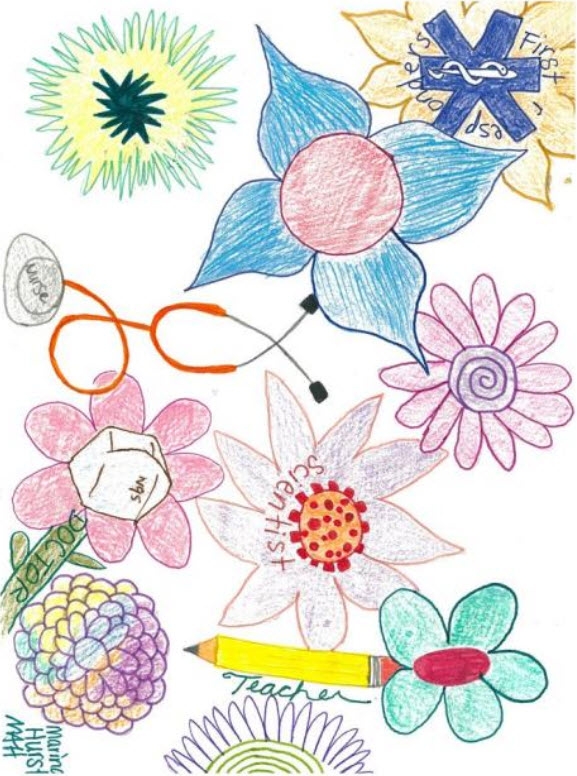 Marina Hurst – Big Brothers Big Sisters Greater Houston
Marina Hurst – Big Brothers Big Sisters Greater Houston
Untitled
Color Pencils
2021
Jacelynn Pelham’s Untitled, 2021 shape shifts from a chart to a map to a game board illustration. The game pieces are the social groups Pelham has observed, identified, and ranked by her color choices, her scope of saturation and also her font choices.
The final set of artworks comes from “Black Girls Do Engineer.” They clearly state their focus on the amazing women who helped us “get through.” We get to see the women who have kept them moving forward during this pandemic. Leelah Washington’s Open Earth, 2021, seems a command or plea to Mother Nature to take charge.
Through the eyes of children, perhaps we may heal our hearts.
COVID-19 PAGES is on display through September 30, 2021.
About the Author:
Vera Ingrid Grant is an independent curator and writer based in Ann Arbor, MI. Her recently curated exhibitions include Cullen Washington, Jr.: The Public Square (2020); COLLECTION ENSEMBLE and Abstraction, Color, and Politics (2019) for the University of Michigan Museum of Art (UMMA); Carrie Mae Weems: I Once was a Girl (2017); Harlem: Found Ways(2017); THE WOVEN ARC (2016); Art of Jazz: NOTES (2016) at the Ethelbert Cooper Gallery (Harvard University); and Persuasions of Montford at the Boston Center for the Arts (2015). Grant has held a number of fellowships: the Center for Curatorial Leadership (2015-16); the Studio Museum in Harlem (2014); the W. E. B. Du Bois Institute, Harvard University (2012); and was also a Visiting Scholar at the Center on Intersectionality and Social Policy, Columbia Law School, NY (2011). Grant has an MA in Modern European History from Stanford University and was a Fulbright Scholar at the University of Hamburg.
